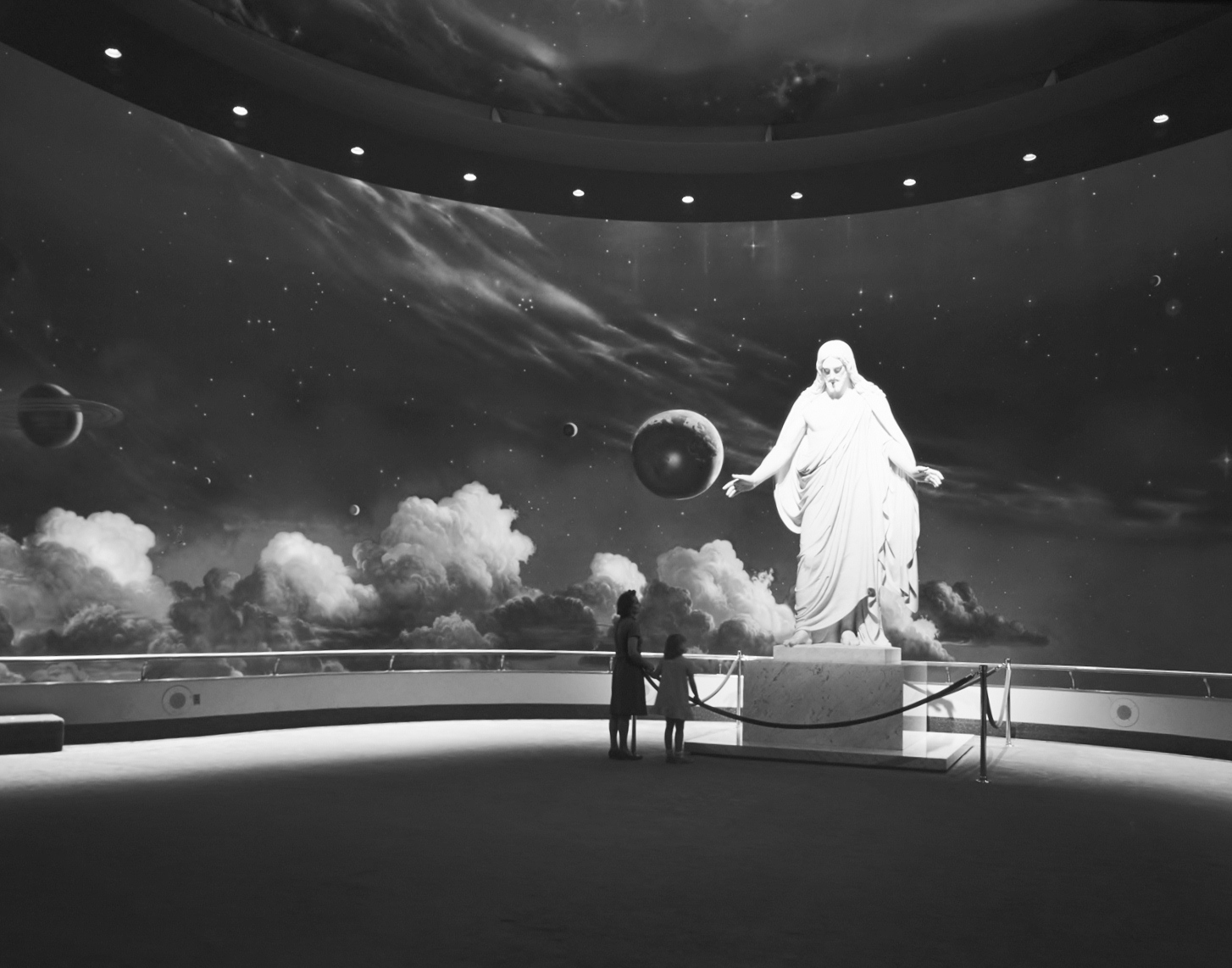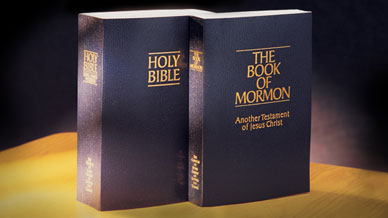Editor’s note: This post is part of a collaborative effort of Mormon bloggers who are reading and writing about General Conference talks. We call it the General Conference Odyssey. We’ve started with talks from 1971. The goal is to read and write, weekly, until we have read at least all of the talks from prophets and apostles, and many of the talks from other general leaders and officers of the Church. (If we keep up the pace we have started, we will have caught up by July 2029 with the April 2029 Conference!) The other posts from this week’s reading, which focused on the Tuesday Morning Session (interesting that they did Conference on Tuesdays!) of the April 1971 General Conference, are at the bottom of the post.
Last night, my family went shopping for a car lease. I was trained in my business/finance classes to never, ever accept gap insurance with a lease. But in one of the lease products, the gap insurance was a built-in feature. We had no choice. I wasn’t too thrilled about this, until my husband shared his opinion about why, in our situation, he liked the concept.
The car we are possibly going to get is for our teenage drivers. Through no fault of their own — just given the fact that they are young and inexperienced — the chance that our children may have a fender bender or accident is not remote. (Heaven help us that any such event be minor!) Gap insurance is there to protect us and the leasing company against the automatic loss that would come if there was an accident or other harm to the car. As such, we could turn the keys over to the leasing company at the end of the lease and walk away in peace, without having to carry the burden of the loss ourselves.
I’m thinking about gap insurance as I try to assimilate the messages from the Tuesday session of the 1971 General Conference.
As we see in the patterns of teachings in General Conference, we are often presented the ideal. For example, it’s been interesting, but not surprising, to see the many patterns already emerging in the General Conference talks we have read so far in our General Conference Odyssey: One of the key messages is that of the importance of marriage and family. Talks like those from James A. Cullimore (“Marriage is intended to be eternal“) and Marion D. Hanks (“Practicing What We Preach“) from this week’s Odyssey study give counsel that paint pictures of the ideal family life, even teach that this is our covenant responsibility to strive for.
This painting-through-preaching can often help many people do just that — strive for improvement in healthy, attainable ways. One of the key reasons for family life is to, as Elder Hanks says, practice what we preach and what we believe about love, patience, forgiveness, and so on.
And yet, teachings about the ideal also can create a sense of pain and deep loss and grief for those who are currently experiencing a significant difference between that ideal and the real.
As I read these two talks about marriage and family life, I felt some of that pain on behalf of so many people I know experiencing that gap — some through no fault of their own because of the sins and struggles of family members they love.
And which of us has not felt the pain of our own human, fallen, less-than-ideal behavior as we struggle in our inexperience — and sometimes even cause harm through accident or even willful mistake or sin? Some of my most agonizing life moments have been when I have seen my weakness as a mother. I love my children so very much, and I want them to have the best. But I have not often been at my best. In fact, just as there is only one way my children can learn to drive (by driving), there was only one way I could learn to be a mother (by mothering).
The truth is that we are here to learn by experience, not to magically attain perfection simply because we believe in ideals, values, commandments, and doctrines. We practice what we preach. And practicing means making lots of mistakes along the way.
I only wish I’d understood — really understood — more about the Atonement when I was a young mother. (But, alas, learning about the Atonement is something we also learn by experience!)
We as mortals are wired to avoid pain, however. And sometimes, we as Mormons sometimes want to avoid pain by softening the ideal in some way. I have witnessed dozens, if not hundreds of times, this inclination — including sometimes in myself — to somehow wish the hurt could be reduced by hearing less or having others cushion the gap for us. (How many times I cringed at motherhood talks as I wrestled with my momma weakness, for example.)
But I have come to believe that this is not God’s way.
I see at least two reasons why we need the ideal so, so desperately in our lives, even when it may cause some pain.
One reason is explained beautifully by Elder Jeffrey R. Holland in one of my all-time favorite talks. This was not from a General Conference, but from a Worldwide Training meeting.
Elder Holland’s message was entitled “General Patterns, Specific Lives” (text here, audio/video here). He was addressing why it was that in a worldwide meeting about marriage and family, single young adults were deliberately invited. He also reached out with love to those whose lives don’t meet the ideal, acknowledging without question that that reality is known and cared about by our leaders. Nevertheless, he unapologetically taught that
“….General Authorities and general officers are called to teach His general rules. You and we then lead specific lives and must seek the Lord’s guidance regarding specific circumstances. But there would be mass confusion and loss of gospel promises if no general ideal and no doctrinal standard were established and, in our case today, repeated. We take great strength in knowing the Lord has spoken on these matters, and we accept His counsel even when it might not be popular.
And even when they know it might be painful. I see in his teachings an invitation to a sort of consecrated mindset that we don’t often talk or think about. We are in a very real sense called to support, sustain, teach, and preach the ideal, even when our lives don’t match it, because that ideal is a way God protects all of His children — especially those who would have no way to find it because their lives are so very not-ideal…sometimes for generations on end.
Thank you for understanding why we are concerned about protecting all members of families, whatever your age, and why we speak in opposition to trends or forces that would seek to destroy any aspect of God’s eternal plan of happiness. How grateful we are that the Lord has said, “I will give unto you a pattern in all things, that ye may not be deceived” (D&C 52:14).
I think there is another reason for the ideal, one that, once we know the ideal, is so very essential to our mortal and eternal journey. I believe the scriptures teach us (I am thinking of 2 Nephi 2 and many of the teachings of Paul, in particular) that the ideal is given so that we can experience the pain of the gap it creates — not because God is some sadistic being, but because we are here to then learn to experience the power of His rescuing love through the Atonement of Jesus Christ.
We are here to be saved, covered, helped, carried, sustained. Rescued.
In this 1971 session of Conference, Thomas S. Monson spoke. And wouldn’t you know it? He spoke about service and rescuing those in need, especially those in isolation, suffering from hard mortality reality situations. After sharing some World War I history about the Meuse-Argonne offensive and the “crusade of love” to rescue a battalion surrounded by its enemy forces, Elder Monson urged members to
“…turn from the past and survey the present. Are there “lost battalions” even today? If so, what is our responsibility to rescue them? Their members may not wear clothes of khaki brown nor march to the sound of drums. But they share the same doubt, feel the same despair, and know the same disillusionment that isolation brings.”
What can bring a sense of isolation to a life? The list is limitless. Some things come of choice and agency, some come of ignorance and inexperience, and some simply come because we are mortal. Beyond the reminder to serve and reach out and rescue others, I want to focus primarily on this point from Elder Monson’s talk:
In reality, each one of us is numbered in what could well have been the lost battalion of mankind, even a battalion doomed to everlasting death….
And each of us face the effects of spiritual death — our separation from God while living in this sphere — every day. Each of us is part of the lost battalion, every day. We are here both to get a body (so we can someday have a resurrected body) and to learn in this imperfect, less-than-perfect experience to let that ideal-vs.-real gap bring us to God.
“[J]ust as a man does not really desire food until he is hungry, so he does not desire the salvation of Christ until he knows why he needs Christ.
“No one adequately and properly knows why he needs Christ until he understands and accepts the doctrine of the Fall and its effect upon all mankind.” (President Ezra Taft Benson, A Witness and a Warning [1988], 33)
The chasm and pain created by the teachings about the ideal (and our inability to reach all ideals, all the time) can help us come to feel and understand the reality of the doctrine of the fall! If we understand that doctrine — really experience and taste of the bitterness of our less-than-ideal-ness — we are prepared to truly receive the Atonement into our lives.
Yes, we are all the “lost batallion,” but the battle is already won. The loss is already covered. All we need to do is accept what is already built into God’s merciful, brutiful plan. [Thanks, Glennon Melton, for that awesome word.]
All we need to do is give the keys of our lives over to God and let Him bring us peace.
I loved how then-Elder Monson ends his talk.
Of him who delivered each of us from endless death, I testify he is a teacher of truth—but he is more than a teacher. He is the exemplar of the perfect life—but he is more than an exemplar. He is the great physician—but he is more than a physician. He who rescued the “lost battalion” of mankind is the literal Savior of the world, the Son of God, the Prince of Peace, the Holy One of Israel, even the risen Lord, who declared, “I am the first and the last; I am he who liveth, I am he who was slain; I am your advocate with the Father.” (D&C 110:4.)
We don’t have to wait until our lease on life is over to experience the blessings of the Atonement. Yes, the Savior of the World bridges the gap of death for us all, but He will also bridge the gap that our fallenness creates — now, today, if we will let Him. He offers daily, everlasting coverage during this life, both from our own messy, mortal processes and also from the effects of others’ recklessness and wrongdoing.
He is our gap insurance today, now, and forever.
So the next time you feel the sting of a talk or post or picture about the ideal (either from our prophets or through your social media stream), one that brings your less-than-ideal self or life to mind, remember the heart of the gospel message.
(I write for myself as much for anyone.)
Remember Him. Let Him bridge the gap.
Other posts from this week’s General Conference Odyssey reading:
Saving the Lost Battalions by Nathaniel Givens
The Secret Life of Mormons by G
“I Have that Witness” by Daniel Ortner”
Knowledge — On Whose Terms? by Ralph Hancock
LDS Conference April 1971 — Profound Spiritual Experiences in an Elevator by J. Max Wilson
Escaping “The Box” Through Families












